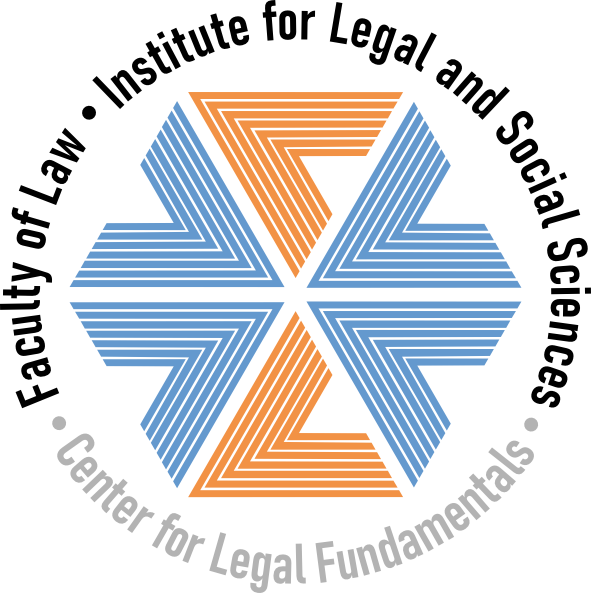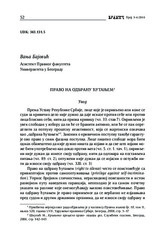Pravo na odbranu ćutanjem
Right to silence
2010
Preuzimanje 🢃
Članak u časopisu (Objavljena verzija)

Metapodaci
Prikaz svih podataka o dokumentuApstrakt
Right to silence and privilege against self-incrimination are generally accepted principles that lie at the heart of the notion of a fair procedure. In spite of the fact that this guaranties are often considered as 'one and the same thing', they must be seen as a two partly overlapping circles. The right to silence is narrower and it refers to verbal communication alone the right of accused not to speak. The privilege goes further and means protection of any person not to present evidence at the own expense. Both privileges originated from the common-law system, and even today they have various meaning and implementation in accusatorial system typical for the common law countries, and mixed procedural model, characteristic for the countries of continental Europe. Illustrative example is the fact that in the mixed system, accused rarely used his right to silence during the main hearing, while in the common law countries the accused rarely used his right to speak on the own trial. Practi...cal application of right to silence in Serbian and American criminal procedure is given as an illustration of differences between two opposite models. First part of the Article deal with the historical development of the guarantees, their regulation in international documents and interpretation in the practice of European Court of Human Rights. In the second part is explained right to silence during the police interrogation and Miranda warnings, while the third part copes with the using of this right during the trial. At the same time are clarified the differences between common law trial and European main hearing, as well as diverse role of the defense counsel, what all together contribute (and explain) various practical application of the right to silence.
Izvor:
Branič - časopis Advokatske komore Srbije, 2010, 123, 3-4, 52-65Izdavač:
- Advokatska komora Srbije, Beograd
Institucija/grupa
Pravni fakultet / Faculty of Law University of BelgradeTY - JOUR AU - Bajović, Vanja PY - 2010 UR - https://ralf.ius.bg.ac.rs/handle/123456789/512 AB - Right to silence and privilege against self-incrimination are generally accepted principles that lie at the heart of the notion of a fair procedure. In spite of the fact that this guaranties are often considered as 'one and the same thing', they must be seen as a two partly overlapping circles. The right to silence is narrower and it refers to verbal communication alone the right of accused not to speak. The privilege goes further and means protection of any person not to present evidence at the own expense. Both privileges originated from the common-law system, and even today they have various meaning and implementation in accusatorial system typical for the common law countries, and mixed procedural model, characteristic for the countries of continental Europe. Illustrative example is the fact that in the mixed system, accused rarely used his right to silence during the main hearing, while in the common law countries the accused rarely used his right to speak on the own trial. Practical application of right to silence in Serbian and American criminal procedure is given as an illustration of differences between two opposite models. First part of the Article deal with the historical development of the guarantees, their regulation in international documents and interpretation in the practice of European Court of Human Rights. In the second part is explained right to silence during the police interrogation and Miranda warnings, while the third part copes with the using of this right during the trial. At the same time are clarified the differences between common law trial and European main hearing, as well as diverse role of the defense counsel, what all together contribute (and explain) various practical application of the right to silence. PB - Advokatska komora Srbije, Beograd T2 - Branič - časopis Advokatske komore Srbije T1 - Pravo na odbranu ćutanjem T1 - Right to silence EP - 65 IS - 3-4 SP - 52 VL - 123 UR - conv_1827 UR - https://hdl.handle.net/21.15107/rcub_ralf_512 ER -
@article{
author = "Bajović, Vanja",
year = "2010",
abstract = "Right to silence and privilege against self-incrimination are generally accepted principles that lie at the heart of the notion of a fair procedure. In spite of the fact that this guaranties are often considered as 'one and the same thing', they must be seen as a two partly overlapping circles. The right to silence is narrower and it refers to verbal communication alone the right of accused not to speak. The privilege goes further and means protection of any person not to present evidence at the own expense. Both privileges originated from the common-law system, and even today they have various meaning and implementation in accusatorial system typical for the common law countries, and mixed procedural model, characteristic for the countries of continental Europe. Illustrative example is the fact that in the mixed system, accused rarely used his right to silence during the main hearing, while in the common law countries the accused rarely used his right to speak on the own trial. Practical application of right to silence in Serbian and American criminal procedure is given as an illustration of differences between two opposite models. First part of the Article deal with the historical development of the guarantees, their regulation in international documents and interpretation in the practice of European Court of Human Rights. In the second part is explained right to silence during the police interrogation and Miranda warnings, while the third part copes with the using of this right during the trial. At the same time are clarified the differences between common law trial and European main hearing, as well as diverse role of the defense counsel, what all together contribute (and explain) various practical application of the right to silence.",
publisher = "Advokatska komora Srbije, Beograd",
journal = "Branič - časopis Advokatske komore Srbije",
title = "Pravo na odbranu ćutanjem, Right to silence",
pages = "65-52",
number = "3-4",
volume = "123",
url = "conv_1827, https://hdl.handle.net/21.15107/rcub_ralf_512"
}
Bajović, V.. (2010). Pravo na odbranu ćutanjem. in Branič - časopis Advokatske komore Srbije Advokatska komora Srbije, Beograd., 123(3-4), 52-65. conv_1827
Bajović V. Pravo na odbranu ćutanjem. in Branič - časopis Advokatske komore Srbije. 2010;123(3-4):52-65. conv_1827 .
Bajović, Vanja, "Pravo na odbranu ćutanjem" in Branič - časopis Advokatske komore Srbije, 123, no. 3-4 (2010):52-65, conv_1827 .



